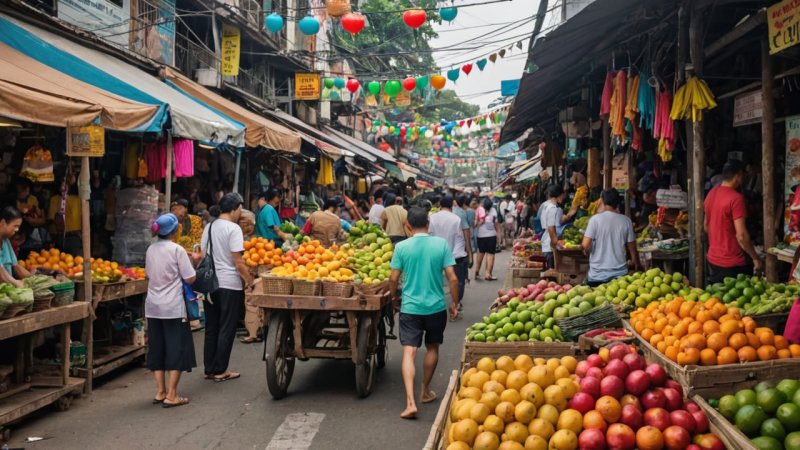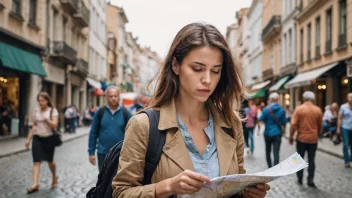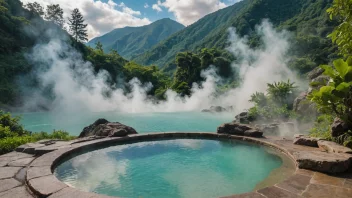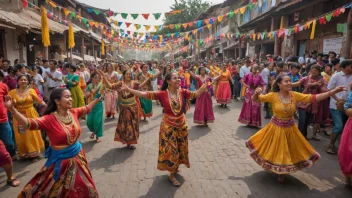Traveling through Southeast Asia offers a vibrant tapestry of culture, flavors, and experiences. One of the most visually striking and culturally rich aspects of this region is its bustling markets. From the fragrant food stalls of Thailand to the intricate handicrafts of Vietnam, these markets are a photographer’s paradise. In this article, you'll learn how to capture the essence of these colorful markets, including tips on timing, composition, and engaging with locals.
Step 1: Research Your Destinations
Before embarking on your photographic journey, it's essential to know which markets to visit. Southeast Asia is home to numerous markets, each offering unique experiences.
- Bangkok, Thailand: Chatuchak Weekend Market is one of the largest markets in the world, with thousands of stalls.
- Hanoi, Vietnam: Dong Xuan Market is famous for its textiles and local foods.
- Siem Reap, Cambodia: Angkor Night Market showcases local crafts and souvenirs.
Conduct thorough research to find the markets that resonate most with your interests.
Step 2: Timing Your Visit
The time of day can significantly affect the quality of your photographs. Early mornings and late afternoons provide the best natural light.
- **Morning Light:** Arriving early allows you to capture the market as it comes to life. The soft morning light enhances colors and creates long shadows.
- **Golden Hour:** Late afternoons, just before sunset, also offer warm lighting that beautifully highlights textures and colors.
Plan your visit during these times to maximize your photographic potential.
Step 3: Composition Techniques
Understanding composition is vital in photography, especially in busy market settings. Here are some techniques to consider:
- Rule of Thirds: Position key elements along the lines or at the intersections of a tic-tac-toe grid to create balance.
- Leading Lines: Use pathways or rows of stalls to guide the viewer’s eye through the photo.
- Framing: Use market stalls or hanging items to create a natural frame that draws attention to your subject.
Experiment with different angles and perspectives to capture the vibrancy of the market.
Step 4: Engage with Locals
One of the highlights of visiting markets in Southeast Asia is the opportunity to meet locals. Engaging with vendors can lead to authentic photographs.
- **Ask for Permission:** Always ask for permission before taking photographs of people. A friendly smile and a polite request can go a long way.
- **Capture Candid Moments:** Look for moments of interaction—vendors selling their goods, customers sampling food, or children playing nearby.
These candid shots often convey a more profound story and evoke emotions in the viewer.
Step 5: Embrace the Chaos
Markets can be chaotic, with people bustling about, colors clashing, and sounds overlapping. Embrace this chaos in your photography!
- Photograph Movement: Capture the hustle and bustle by using a slower shutter speed to create motion blur.
- Focus on Details: Zoom in on unique items or textures, such as spices, fabrics, or handcrafted goods.
By embracing the chaos, you can create dynamic and lively images that represent the spirit of the market.
Step 6: Post-Processing Your Photos
After your market adventure, it's time to process your photos. Use photo editing software to enhance your images.
- **Adjust Brightness and Contrast:** Make sure your photos pop by tweaking the brightness and contrast levels.
- **Crop for Composition:** Refine your composition by cropping out distracting elements.
- **Color Correction:** Adjust the color balance to ensure the vibrant hues of the market are accurately represented.
Post-processing can elevate your images, making them more visually appealing.
Final Thoughts
Exploring the colorful markets of Southeast Asia is a rewarding experience, especially for photography enthusiasts. By researching your destinations, timing your visits, applying composition techniques, engaging with locals, embracing the chaos, and post-processing your photos, you can capture the essence of these vibrant markets. Remember, the goal is to tell a story through your images, reflecting the rich culture and atmosphere of Southeast Asia's markets.






